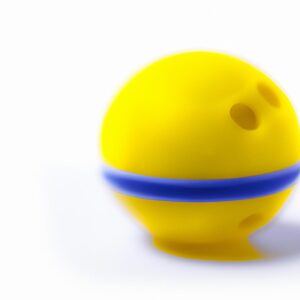**”Cycling Cadence: The Optimal RPM for Maximizing Endurance and Efficiency in Long-Distance Rides”**
# Cycling Cadence: The Optimal RPM for Maximizing Endurance and Efficiency in Long-Distance Rides
Cycling is not just a sport; it’s a lifestyle embraced by many for fitness, fun, and transportation. One of the most critical components that can significantly impact performance, particularly in long-distance rides, is cycling cadence. Defined as the number of revolutions per minute (RPM) of the pedals, cadence plays a pivotal role in enhancing endurance and efficiency. Understanding your optimal cadence can lead to improved performance on the bike, which can be particularly beneficial for long-distance cyclists. In this blog post, we will explore the optimal RPM for cycling, delve into nutrition tips, exercise advice, health benefits, and ultimately help you maximize your long-distance riding experience.
## Understanding Cycling Cadence
### What is Cadence?
Cadence measures how fast you turn the pedals while cycling. It is typically expressed in revolutions per minute (RPM). Most cyclists find their optimal cadence falls between 70 to 100 RPM, though this can vary based on experience, fitness level, and specific riding goals.
### Why is Cadence Important?
Maintaining an optimal cadence helps in managing energy expenditure and muscle fatigue during long rides. A high cadence can reduce the risk of injury by minimizing the strain on muscles and joints, while a lower cadence may allow for stronger power output but can lead to quicker fatigue. Finding the right balance is essential for maximizing performance over long distances.
## Nutrition Tips
### Fueling for Endurance
Proper nutrition is paramount for long-distance cycling. Carbohydrates are your primary fuel source, especially when cycling for extended periods. Aim to consume complex carbohydrates—such as whole grains, fruits, and vegetables—before your ride to ensure sustained energy levels.
### Hydration is Key
Dehydration can severely impact performance and endurance. Ensure you hydrate before, during, and after your ride. A good rule of thumb is to drink at least 500ml of water in the hours leading up to your ride and then consume about 500–1000ml per hour while cycling, depending on the intensity and weather conditions.
### On-the-Ride Nutrition
For rides lasting over an hour, incorporating energy gels, bars, or electrolyte drinks can help maintain energy levels. Aim for 30-60 grams of carbohydrates per hour during your ride to keep your energy reserves topped up.
## Exercise Advice
### Finding Your Optimal Cadence
To determine your optimal cadence, start with a baseline test. Ride at a comfortable pace and gradually increase your RPM while monitoring your heart rate and perceived exertion. This process will help you identify a cadence range where you feel powerful yet efficient.
### Incorporating Cadence Workouts
Once you identify your optimal range, incorporate cadence drills into your training routine. For example, during a workout, alternate between low-cadence (60-70 RPM) and high-cadence (90-110 RPM) efforts. This will help build strength and efficiency, improving your overall cycling performance.
### Focus on Form
Proper cycling form is essential for maintaining an effective cadence. Keep your upper body relaxed, engage your core, and ensure a smooth pedal stroke. This not only aids in maintaining cadence but also minimizes fatigue during longer rides.
## Health Benefits
### Improved Cardiovascular Health
Cycling is an excellent way to enhance cardiovascular fitness. Regular long-distance rides at an optimal cadence can lead to improved heart health, increased lung capacity, and better circulation, making it easier to maintain endurance during rides.
### Enhanced Muscle Strength and Endurance
Cycling engages multiple muscle groups, predominantly the legs, core, and even the upper body. Maintaining an optimal cadence helps promote muscle endurance and strength, allowing you to ride longer without experiencing significant fatigue.
### Mental Well-Being
Cycling, especially over long distances, provides mental health benefits. It can reduce stress, improve mood, and increase overall mental clarity. Maintaining an optimal cadence allows for a more enjoyable experience, increasing the likelihood of regular cycling sessions.
## Conclusion
In conclusion, cycling cadence is a crucial factor for maximizing endurance and efficiency in long-distance rides. By understanding the importance of finding your optimal RPM, fueling your body with the right nutrition, incorporating cadence-specific workouts, and recognizing the associated health benefits, you can elevate your cycling experience. Ultimately, mastering your cadence not only enhances performance but also contributes to a healthier, more fulfilling lifestyle, making each ride not just a journey, but a celebration of endurance and strength.















Post Comment